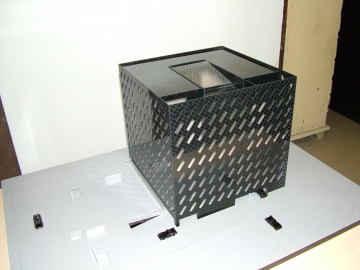Headquarters of Prosecutors office in Vilnius
The architectural-plastic idea - cube conceptually gives sense to order, stability, strength, rigour, etc. This form best reflects the specifics of the object and creates an exceptionally suggestive and concentrated image of a law enforcement institution.
One of the key formative elements of the image is the application of black, polished granite to the exterior of the building. This natural, precious mineral has to stress the necessary level of solidity of one of the key institutions in the law enforcement system. Black the colour of law enforcement conceptually contributes to the general solution of the building (any other colour in this case would be a simple formal aesthetisation, a search for beauty that is incompatible with the specifics of the object).
The strict composition of the cube in black is conceptually supplemented with a rhythm of oblique windows that brings drive and dynamism, which is also an inseparable part of the activity of the prosecutors office, to the static character of the building. The overall heavy, stable form has been provided with the elements of dynamics. In this way, a visual motion appears. It is a change and a fourth dimension, giving atypical qualities to the static form, activating it, and turning it into a hypersurface. Here hyper? is not in binary relation to the surface. It is a new notion that describes a complex condition of architectural surface.
The plot of land is in the central part of Vilnius, about one kilometre from the historical centre of the city. This is a continuation along the axis of the new administrative centre. Urban context is a random structure of urban texture that emerged spontaneously. A low quality, noncommittal built up area dominates, with typical Soviet period apartment buildings.
Priority was given to the aimto express the specific aura of the Prosecution Service as an institution, as well as the purity of the architectural idea and form of the object, its clarity, perfection of proportions, and responsiveness. Minimum means were used to achieve maximum suggestibility and expressiveness. Less is more. There is a blend of strictness, simplicity, and restraint about this work. The Black Cube seems to express the wish to be seen, and not to blend with the surrounding grey buildings, but to set a new tone, a tune to the territory and become a pausea black point that embodies a search for silence in the noise of the city.
The location of the building on this plot was aimed at smooth adaptation to the existing surroundings, and preservation of the character of the landscape.
A massive black cube hanging on a transparent basement visually glides and daunt visitors, making them psychological impact, experience a feeling of fear and respect.
Main building materials - stone, concrete, wood, glass, metal. The building contains 13 floors: nine floorsabove ground, threeunder ground, and ground floor. The total area ~ 17,500 m2. An internal space connects all the floorsan atrium with hanging conference and meeting rooms - heart and brain of the building.

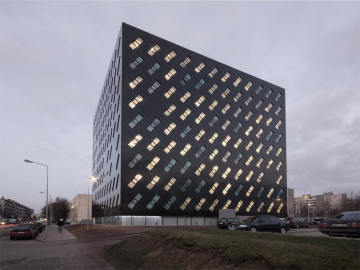
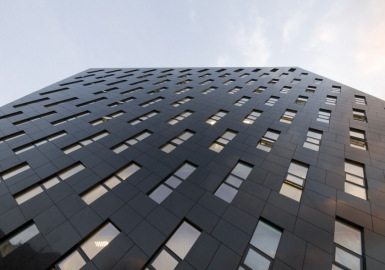

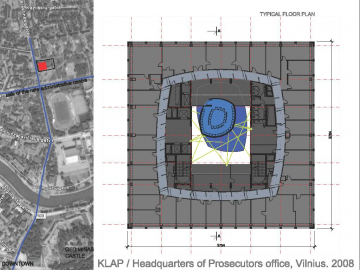

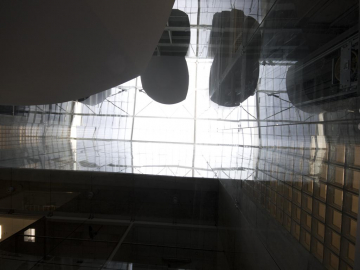
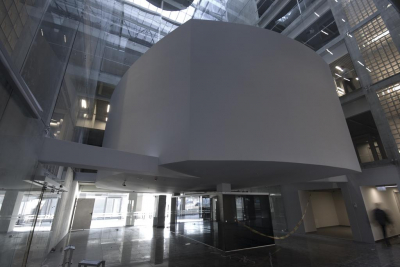

.jpg)

